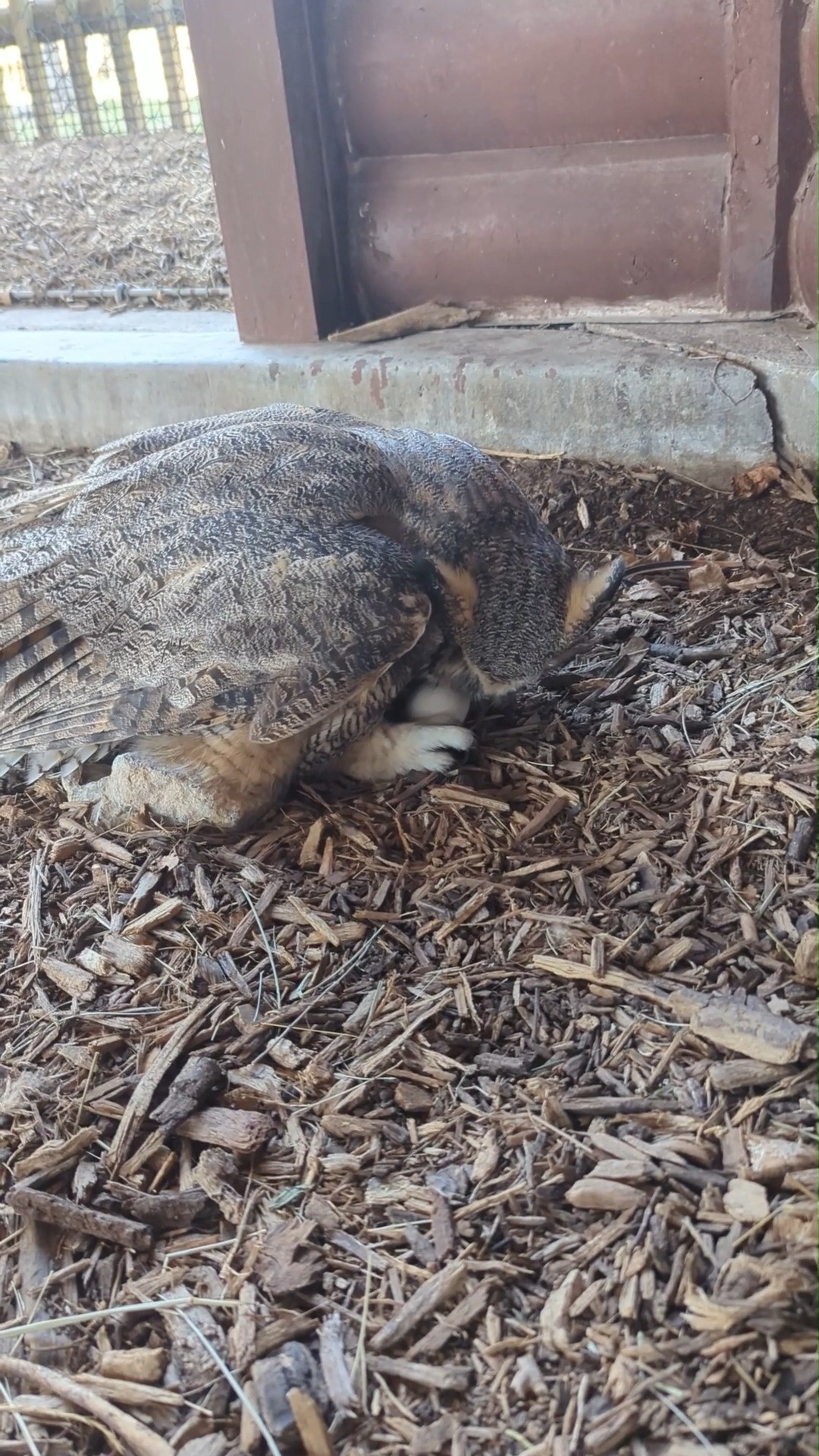- Understanding the intricate process of egg formation in birds.
- The reproductive cycle of great horned owls and its peculiarities.
- The significance of dummy eggs in captive care for stimulating natural behaviors.
- The role of wildlife conservation efforts in great horned owl habitation.
- The educational and enrichment strategies employed in zoos to mimic natural owl behavior.
Great horned owls, scientifically named Bubo virginianus, are among North America’s most adaptable raptors. They are emblematic of nocturnal hunters, known for their tufts and intense gaze. But have you ever wondered how an egg is formed within these magnificent birds before fertilization even occurs? The egg formation process in birds is a marvel of biological engineering that differs substantially from how it occurs in mammals, making it an intriguing subject for study.
To begin, understanding egg formation demands a look into avian reproductive anatomy and physiology. The process starts with the female bird’s reproductive organ, the ovary. Unlike mammals, birds usually possess a single functional ovary — the left one. In the ovary, ova (or egg cells) develop within structures called follicles. Remarkably, these are present before birth. As a bird matures, the ova grow and move towards ovulation.
When an ovum is ready to be expelled from the ovary, it travels down the oviduct, where various segments add different components to construct the complete egg. The most vital addition occurs in the infundibulum where fertilization (if it occurs) would take place. The magnum contributes the egg white or albumen, while the isthmus adds two shell membranes. Finally, in the uterus or shell gland, calcium carbonate secretion forms the outer shell. This entire journey takes around 24-26 hours, and fascinatingly, a bird can lay unfertilized eggs if there is no mating partner, just as our 21-year-old great horned owl, Baby, does.
The reproductive cycle of great horned owls offers fascinating insights into their behavior and adaptation. Owls are known for nesting during late winter, typically laying two to three eggs per clutch. This strategy ensures that the young are hatching and growing into strong fledglings during peak prey availability in spring. Only one brood is generally raised per year, underlining the necessity of successful rearing of chicks for species continuation.
In captivity, where the natural predators and ecological pressures are absent, it’s essential to facilitate behaviors that mirror what would occur in the wild. One strategy for birds like Baby is using dummy eggs. These replicas simulate real eggs in both appearance and weight, convincing the owl that she is incubating fertile eggs. This enrichment plays a crucial psychological role by stimulating natural behaviors, such as incubating and nest guarding, keeping captive owls engaged and active.
The importance of wildlife conservation has never been greater for species like the great horned owl. Loss of habitat due to deforestation and urban encroachment poses significant threats to their natural environment. Conservation initiatives strive to protect these ecosystems and ensure healthy wild populations. Programs often involve habitat restoration, legal protection of owl habitats, and public education to reduce human-induced mortality. These efforts are pivotal as they provide a sustainable future for the owls to thrive in their natural settings.
Zoos and wildlife sanctuaries play a prominent role in these conservation efforts by serving as educational platforms. They employ various enrichment strategies that engage the public and promote awareness about the delicate balance of our ecosystems. By mimicking natural environments and behaviors through items like dummy eggs, zoos help increase public understanding and appreciation of these birds, creating advocates for conservation.
In conclusion, the creation and nurturing of eggs in great horned owls are intricate processes that highlight the complexity of avian reproduction. Egg-laying, even in the absence of a mate, continues as a form of biological clockwork that reflects millions of years of evolutionary refinement. Conservation and enrichment strategies play vital roles in supporting the healthy continuation of these awe-inspiring birds, both in the wild and in captivity.
Through understanding these processes and the efforts taken to maintain and simulate them, we gain a deeper respect for these magnificent creatures. It inspires ongoing commitments to conservation in every encounter, from viewing a majestic owl in the twilight of a forest to observing one in the structured sanctuary of a zoo. Each egg, real or dummy, thus becomes a symbol of nature’s resilience and our stewardship.
*****
Source Description
🦉 Have you ever wondered how an egg is formed 🦉
Eggs are created before fertilization, which means our 21-year-old female great horned owl, Baby, can still lay eggs—even without a partner.
In the wild, great horned owls typically nest in late winter, laying 2–3 eggs and incubating them for 30–37 days. To support these natural instincts, Baby receives dummy eggs that mimic the real thing. This enrichment encourages her natural behaviors and helps keep her active and engaged.
📽️ : Katie T., senior caretaker


